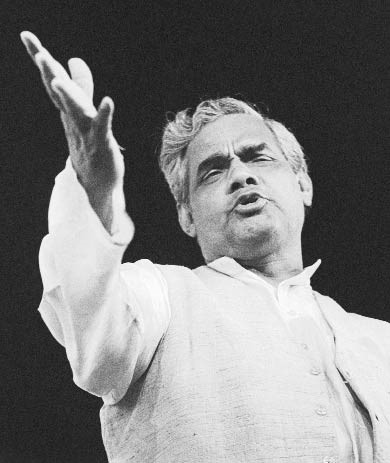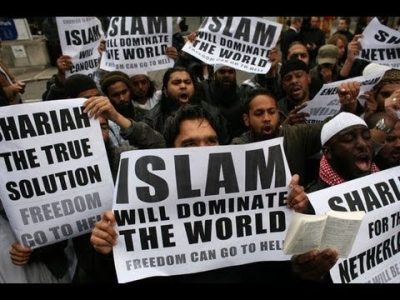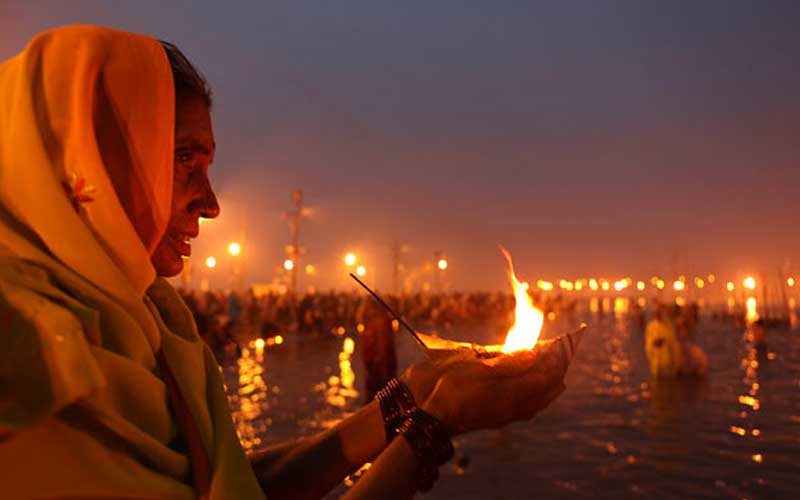Anti-Hinduism as an Industry
Anti-Hinduism is an industry. It has a purpose and an end goal. It has the financial means
Anti-Hinduism is an industry. It has a purpose and an end goal. It has the financial means, institutional set-up, and a tradition of sponsored intellectuals occupying important positions, protecting vested interests of their own.
It began during the colonial era, under the East India Company, and then the British Raj. The story of how missionaries and colonialists slandered Hindus, and Hindu civilization and culture in the heyday of racism is a well-known one. Suffice it to say, a section of the ruling elite found it profitable to abuse Hindu culture and society.
This narrative morphed into an industry after India gained independence. Mahatma Gandhi’s assassination gave Nehru an excuse to stifle all opposition, particularly the nationalists. Under Indira Gandhi and Education Minister Nurul Hasan, anti-Hinduism became firmly entrenched in academia and media. Its steady growth and dominance in the electronic and print media became unchallengeable.
As a consequence, Soviet-sponsored Leftist intellectuals occupied influential positions and became powerful. Their opponents were systematically silenced. Nationalists were hounded out of public discourse. Almost no mainstream newspaper, magazine, or media outlet would give them the opportunity to voice their opinions and offer contrary information.
The demise of the global left in the ’90s, and the rise of the BJP in India gave new hope to the dwindling nationalist forces in the media and academia; but it was a short and bleak respite.
Changing Political Fortunes and Continued Dominance of the Left

Atal Behari Vajpayee (Photo credit: https://docplayer.net)
The Vajpayee government in 1999 brought some welcome changes but it was mainly interested in completing its term, keeping the coalition ship afloat.
Some voices had started to turn away from the Left and present the other side, but it was too little to make any impact. The shocking defeat of the NDA in the 2004 General Election put a swift end to all the new beginnings that were made. If anything, it seriously convinced the ‘intellectuals’ and the journalists that a sustained opposition to the Left was not at all possible.
The UPA government was formed in 2004 hurriedly by collecting all the anti-BJP parties and individual candidates from the messy election results. Nobody then believed the government would last the term. However, it did.
In the 2009 General Election, there was still some hope that the BJP would come back to power. UPA-1 was weak. It did repeal many decisions taken by the previous Vajpayee government, but it mainly concentrated on lasting through the term. Therefore, though the direction of the government was anti-Hindu, the pace was slow and hesitant. When the results came out in 2009, the UPA not only retained power, but the Congress Party increased its individual tally of seats to 206.
UPA-2 was more confident. Behind the smoke created by the numerous scandals by its ministers, there was a determined and coordinated attack on Hindu culture and society. Textbooks were changed. Nationalist bloggers were jailed.[i] New Bills were introduced or changes were made to the existing ones, to the detriment of the majority community.[ii] Many new magazines, newspapers, and online media outlets, which had a clearly anti-Hindu bent were floated.
For the Leftist intellectuals in India, it was a decisive sign that things were going to stay the same; that they would continue to dominate the media and academic institutions. They became more nonchalant in rubbishing and dismissing opposing political views. Their hold on institutions strengthened. They were gearing for a final push to silence the nationalist opposition once and for all.
New magazines and media houses were opened to further the goal of anti-Hinduism. These were more rabidly anti-Hindu than anything India had ever seen before. Their views, bordering on racism, took aim at the entire Hindu society and culture, reminiscent of the colonial era.
The Rise of Social Media
Meanwhile, on another platform something entirely different was occurring.
The Internet had given birth to the phenomenon of social media. It was decentralized and impossible to control by any single ideology or institution. Even governments were ineffective against it. First Orkut, and then Facebook and Twitter took the Indian online community by storm, convincing ordinary people that they now had a voice. For the first time, Indians realized that they did not have to take things lying down and that they could also rise in opposition to what they considered wrong.
Indians did rise. And the Congress Party and their leftist allies found themselves at the receiving end. While the sponsors of the anti-Hindu movements and campaigns invested overwhelmingly in the old technology of mass media, the world had moved forward.

Social Media Icons (Photo credit: https://www.guelphtoday.com)
The new technology had created a platform where controlling mechanisms were ineffectual in most cases and mildly effectual in some. The Nehruvian castle built by state-sponsored intellectuals had finally begun to crumble.
Congress-Communist rulers of the country only woke up to the new threat since it became apparent that Narendra Modi could be the BJP’s candidate for Prime Minister and that he could win. By then, it was too late. In an unprecedented wave of support, Modi and his BJP registered a stunning victory in the 2014 General Election.[iii]
The crushing defeat of the Congress Party had dismayed the leftist intellectuals propped up by Congress-Communist regimes. Sensing the winds of change, some institutions changed their stance, shifting to neutral or focusing more on facts and less on opinions. But there were still many who kept up the struggle against ‘communalism’ and everything that Modi represented.
The media institutions that were spawned during UPA-2 became the rallying point for the anti-Hindu groups. After the initial shock of the election results, they started regrouping and re-strategizing. While some new websites and web portals were opened to spew more hatred against Hindu society, the old ones restocked their garrisons and strengthened their castles.
Unholy Alliance of Radical Islam and the Global Left
One wonders why these leftist institutions, which should be religion-neutral, display such hostility against Hinduism, while failing to even acknowledge the crimes of Islamists and Christian forces in India.
Indeed, this leftist alliance with Islam is not limited to India. The Global Left is aligned with Global Islam in an Unholy Alliance. Since the leftist ideology is officially atheist and Islam is the most radical of monotheistic faiths, it is uncanny that the two have an agreement.
An Unholy Alliance is understood as an unnatural, unusual, or simply undesirable alliance between antagonistic parties. The term was first used in 1855 when the Western European Christian powers had aligned with the Islamic Ottoman Empire of Turkey and against the Orthodox Christian Empires of the Balkans and Russia.[iv]

Stalin (Photo credit: http://lesmaterialistes.com/fichiers/pdf/dossiers/pcf-mlm-urss-socialiste.pdf )
The term became popular again during World War II, when Stalin’s Communist Russia aligned with Nazi Germany to partition Poland.
Railing against Nazism, fascism and nationalism was one of the most central tenets of Leninist and Stalinist communism. The Molotov-Ribbentrop pact of 1939 thus shocked most of the world.[v] Two deadly enemies had come together to share the spoils of war. After that event, the phrase has been used a couple of times in African wars of independence and civil wars.
Communists, however, had always been favorably disposed toward Islamic terrorism: note that the Soviet Union was an ally of Palestine against Israel in its fight against the US. The post 9/11 scenario brought them closer than ever before. The term ‘Unholy Alliance’ once again came in use for the global alliance between left-liberals and Islamist forces.[vi]
David Horowitz, in his Unholy Alliance: Radical Islam and the American Left, explains how the left-liberals in American media and academia became the front-row cheer-leaders for radical Islam, apologizing for Islamic terrorism, blaming it all on ‘American capitalism’.
Misogyny, homophobia, racism, xenophobia, and anti-minority mindset are some of the ideas against which the European and American left-liberals have always put up a solid front.
As Islamists are habitual offenders in all of the above categories,[vii] it is very natural that social activists challenging these discriminatory views and actions should also voice their opinion against the Islamists. However, not only do they keep quiet over Islamists’ crimes against women, gays, and minorities, they paint them as victims of the capitalist West or, in the case of India, the ‘Sangh’.
This unholy alliance begs an explanation.
In the heydays of Soviet Communism, propaganda was one of the most important activities of the Soviet Union. It had its own ministry, Agitprop, Agitation and Propaganda Ministry, devoted to spreading communist propaganda in the Soviet Union and abroad. For this, it had created numerous institutions all over the world and had sponsored innumerable academics, journalists, writers, artists, and political activists in many countries.[viii]
The collapse of the Soviet Union in 1989 left all these institutions and individuals, on the payroll of the Soviet Union, rudderless. They were suddenly left with no finances, no guidance, and no future. With the disappearance of their Moscow masters, it was as if gravity had disappeared. What was to become of all the political machinery that the Soviet Union had created over all those years? What would become of the intellectuals it had sponsored?
Many of these public intellectuals, who had a huge influence, became intellectual mercenaries. Taking advantage of their popularity, they started accepting paychecks from the highest bidders. In turn, they used their excellent capabilities to present propaganda as facts, distort truth, and tilt public opinion.
To their advantage, the demise of global communism coincided with the spectacular rise of Islamic terrorism, and Islamism in general. The Soviet-Afghan War (1979-89) signaled the end of communism and witnessed the rise of Islamism.

Photo Credit: https://besacenter.org
All over the world, public intellectuals of left-liberal orientation found several ready and willing Islamist employers. The Islamists on the other hand found a ready-made machinery and trained foot soldiers who would churn out Islamist propaganda in Western universities, which was then copied by Third World ‘intellectuals’ in their own countries.
Although they are ideologically diametrically opposed, Islamism and left-liberal intellectuals were pragmatic and natural partners in the given circumstances. Moreover, Islamists and left-liberals had a common enemy in the West. This made their alliance even easier. This is how the Unholy Alliance between Radical Islam and the Left came to be.
Their Alliance in India
In India too, the Left had always been aligned with Islamists in a bid to divide the majority by uniting and supporting minorities. During the reign of UPA-2, this alliance became more radical than any time before.
The Left began a determined and sustained effort to attack Hindu society and became open apologists for Islamic crimes of the past, presenting their Hinduphobic ware through various media houses and online sites.
In these websites, every aspect of Hindu civilization was derided, every national hero was slandered, and every villain glorified. And Narendra Modi of course became the ultimate punching bag.
Rise of the Leftist New Media
Left liberalism and anti-Hinduism became mainstream since the time of Indira Gandhi’s tryst with communists. Almost every major newspaper offers some anti-Hindu propaganda on a daily basis. They did that to survive, or it became part of their sales pitch. However, after the 2014 General Election, while most of the mainstream media has become cautious, there are many magazines and websites which are solely devoted to churning out anti-Hindu material, some of which borders on propaganda.
Four of them have become inexplicably popular over the past three or four years. These are:
- The Caravan Magazine
- Scroll.in
- The Wire
- CatchNews
These magazines and online web portals have become suspiciously popular and well-known in a short period of time, despite their limited and mediocre content. Most of what they offer are opinionated articles, which are based on dubious sources. Anti-Hindu bigots quote them liberally on Facebook and Twitter. The founders and editors do not exactly have stellar histories. What is clear, however, is their hatred of Hindus and Hinduism.
So, how do they work? What drives them? What is their motivation? Is it financial or ideological or both? What do they write?
The subsequent series of articles will attempt to answer these questions.
Photo credit: https://in.pinterest.com
(Originally published on August 15th 2015.)

